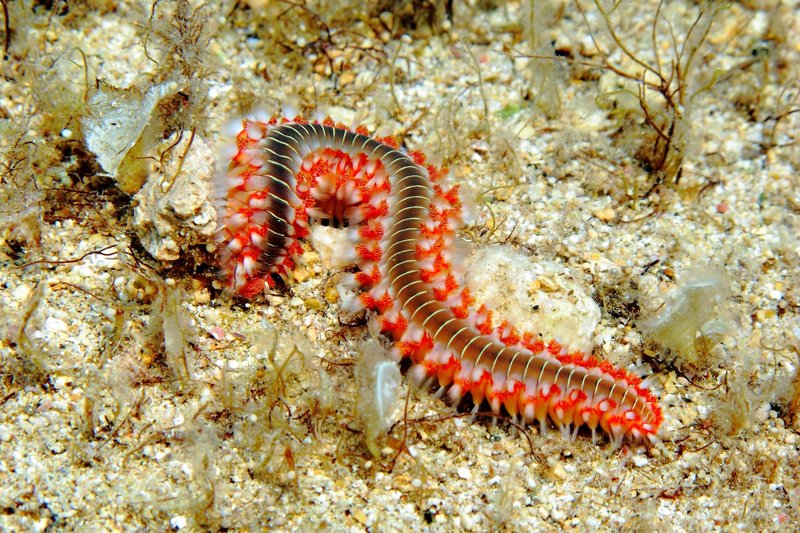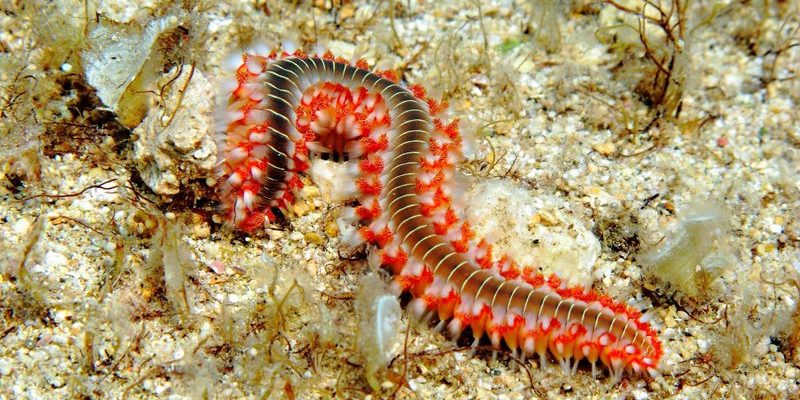
Bristle worms, also known by their scientific name *Polychaeta*, are fascinating creatures that thrive in various marine habitats. They’re often spotted in tidal pools or beneath rocks, and they play a crucial role in the ecosystem. But when you spot those vibrant red tufts, it opens up an entirely new avenue of questions. So, let’s dive into what these flamboyant tufts actually mean and why they’re significant for both the worms and the environment around them.
What Are Bristle Worms?
Before we delve into the specifics of those red tufts, let’s take a moment to understand what bristle worms are. These worms are part of the *Annelida* phylum, which means they’re segmented worms. Bristle worms can range from just a few millimeters to over a meter long, depending on the species. You might think of them as the unsung heroes of the marine world.
These creatures have bristles, or *setae*, protruding from their bodies, which serve multiple purposes like movement and protection. Most of the time, bristle worms are scavengers, munching on dead organic matter, which is crucial for recycling nutrients back into the ecosystem. They’re like nature’s little clean-up crew, breaking down waste and feeding other organisms, which highlights their importance in marine environments.
A fascinating aspect of bristle worms is their adaptability. They can thrive in a wide range of environments, from coral reefs to muddy ocean floors. However, it’s those striking red tufts that really catch the eye and make them stand out from the crowd.
What Do the Red Tufts Signify?
Now, let’s talk about the red tufts you’ve been curious about. These tufts are actually branchial, or gill structures, which serve a functional purpose. They’re responsible for gas exchange, allowing the worm to breathe underwater. Think about it: just like we need lungs to breathe air, bristle worms need these structures to absorb oxygen from the water.
But that’s not the only thing going on with those red tufts. Their bright color can also be a warning sign to potential predators. The vibrant red often indicates that the worm contains toxins. It’s nature’s way of saying, “Hey, don’t eat me!” This bright coloration is similar to how some frogs and insects use bright colors to signal danger, creating a vivid reminder of the old saying: “Red means danger!”
So, in essence, those red tufts serve as both a breathing apparatus and a warning sign. They’re a crucial part of the worm’s survival strategy in the vast ocean.
Different Colors and Their Meanings
While we’ve focused on red tufts, not all bristle worms sport the same colors. Some species may show off bright greens, blues, or even yellows. The color of these tufts often signifies different things, mainly related to their health, the environment they inhabit, or their reproductive status.
– Healthy vs. Stressed: A vibrant color generally indicates a healthy bristle worm. If you notice that the color fades or turns dull, it could be a sign that the worm is stressed or unwell.
– Reproductive Signals: During breeding season, many bristle worms will exhibit brighter colors, which can attract mates. It’s a natural way for them to showcase their fitness and readiness to reproduce.
– Response to Environment: The surrounding environment might also influence coloration. Factors like temperature, salinity, and the presence of toxins can lead to changes in color.
Understanding these variations can give insight into the health of marine ecosystems. If the red tufts are vibrant and diverse, it’s often a sign that the environment is healthy.
How Do Red Tufts Affect Ecosystem Dynamics?
You might be wondering how these red tufts and the bristle worms themselves fit into the bigger picture of marine ecosystems. Bristle worms play several essential roles that extend beyond their individual lives.
1. Nutrient Cycling: As scavengers, bristle worms help break down organic material. This process recycles nutrients back into the ecosystem, promoting the health of various marine plants and animals. If bristle worms are thriving, it’s often a good indicator that nutrients are cycling effectively.
2. Food Source: These worms serve as an important food source for various marine creatures, like fish and crabs. The bright red tufts can act as both a warning to some predators and an attraction for others. It’s a complex dance of survival and ecosystem balance.
3. Habitat Formation: Bristle worms can also influence the structure of their habitats. Their burrowing activities help aerate the sediment, making it easier for plants and other organisms to thrive. Healthy sediment environments benefit marine life at all levels, from microorganisms to large predators.
So, while the red tufts may seem like just a quirky feature, they represent a deeper connection to the balance and health of marine ecosystems.
Are Red Tufts Found in All Bristle Worms?
Not every bristle worm flaunts red tufts. The presence of these vibrant extensions depends on the species and their specific environments. For instance, some bristle worms found in colder waters may show different adaptations that serve similar functions but might not include red tufts.
When you look deeper into the diversity of bristle worms, it’s fascinating to see how nature adapts to different conditions. Each species has its own unique set of physical traits that suit its habitat.
You might also wonder how these tufts relate to other marine animals. In broader ecological terms, researchers often study differences in coloration and structure as a way to understand evolutionary adaptations and the health of marine ecosystems.
In essence, while red tufts are striking and significant, they’re just one part of a diverse family of bristle worms, each with its own adaptations to survive in various environments.
As we wrap up our exploration of these colorful marine creatures, it’s clear that red tufts on bristle worms are more than just a visual treat. They play critical roles in respiration and predator-prey dynamics, while also signaling the health of individual worms and broader ecosystems.
So, the next time you find yourself gazing at a bristle worm with those vivid red tufts, remember: there’s a lot happening beneath the surface. These worms are not just fascinating creatures; they’re vital components of marine life, helping to keep our oceans balanced and healthy.
Next time you dive into the ocean—or even just a tidal pool—appreciate the wonders of these little critters. They remind us of the intricate connections in nature and the importance of preserving marine environments.

